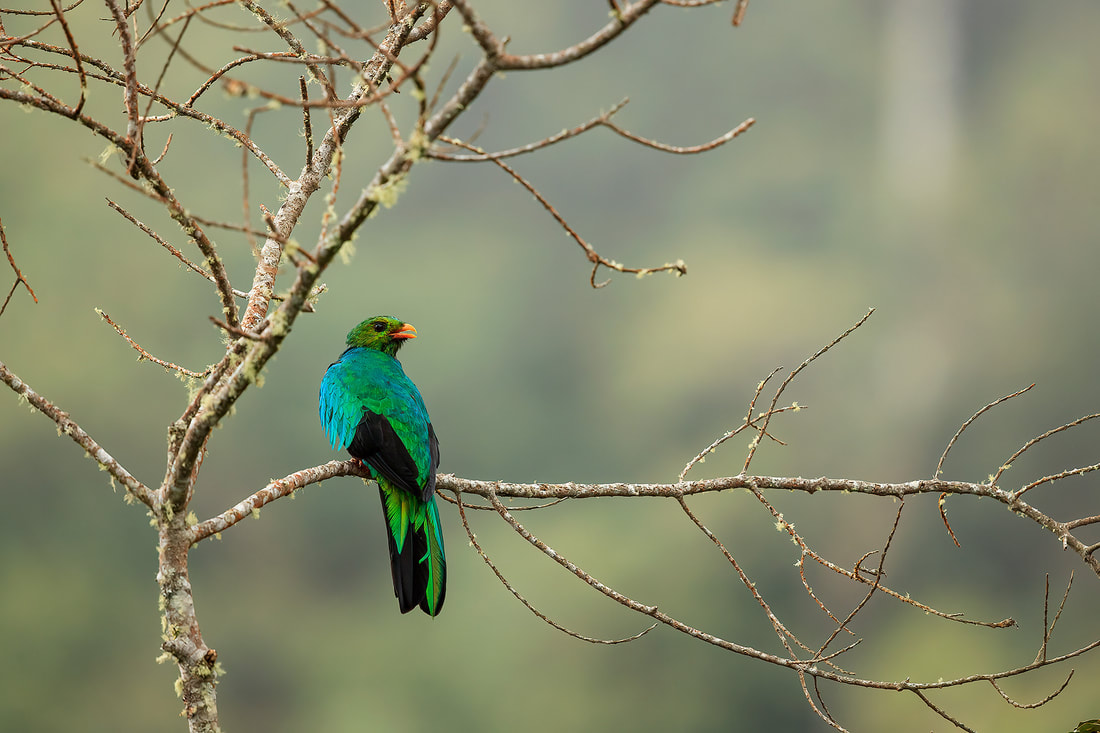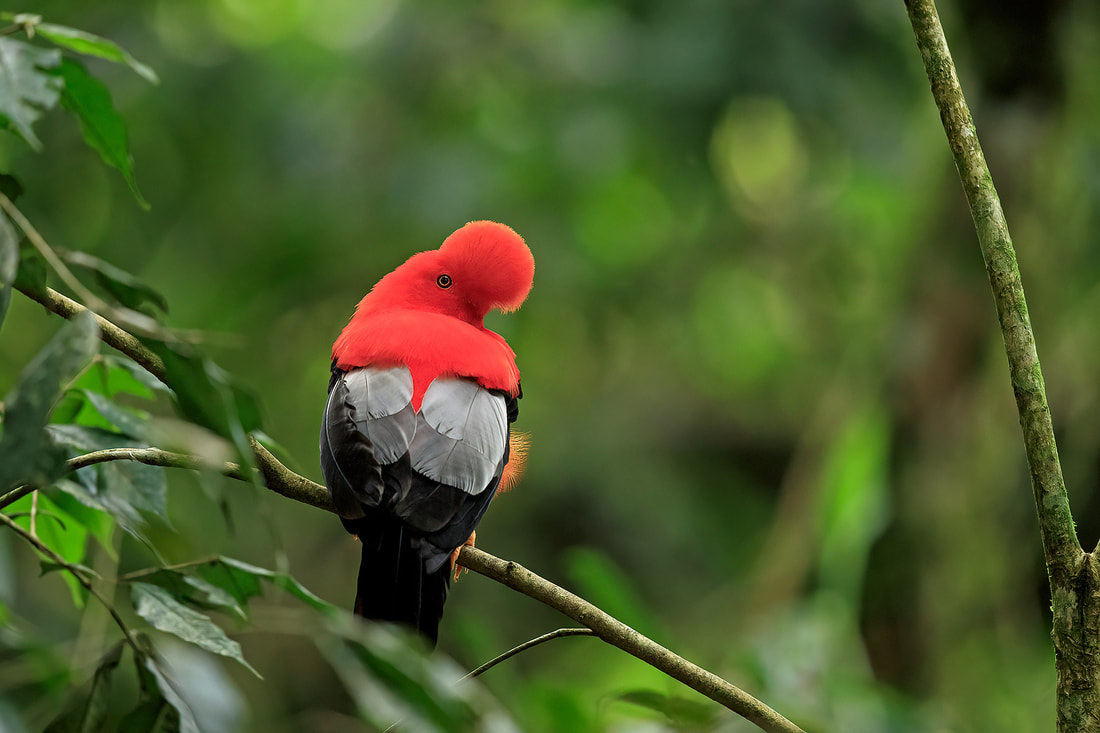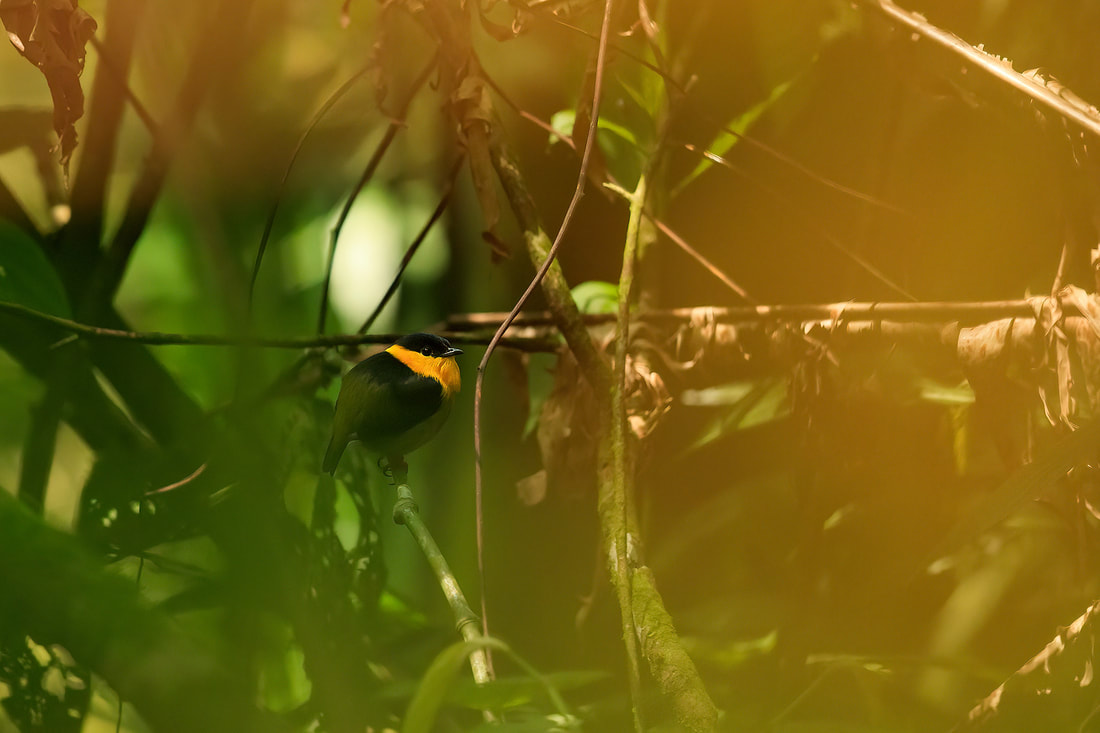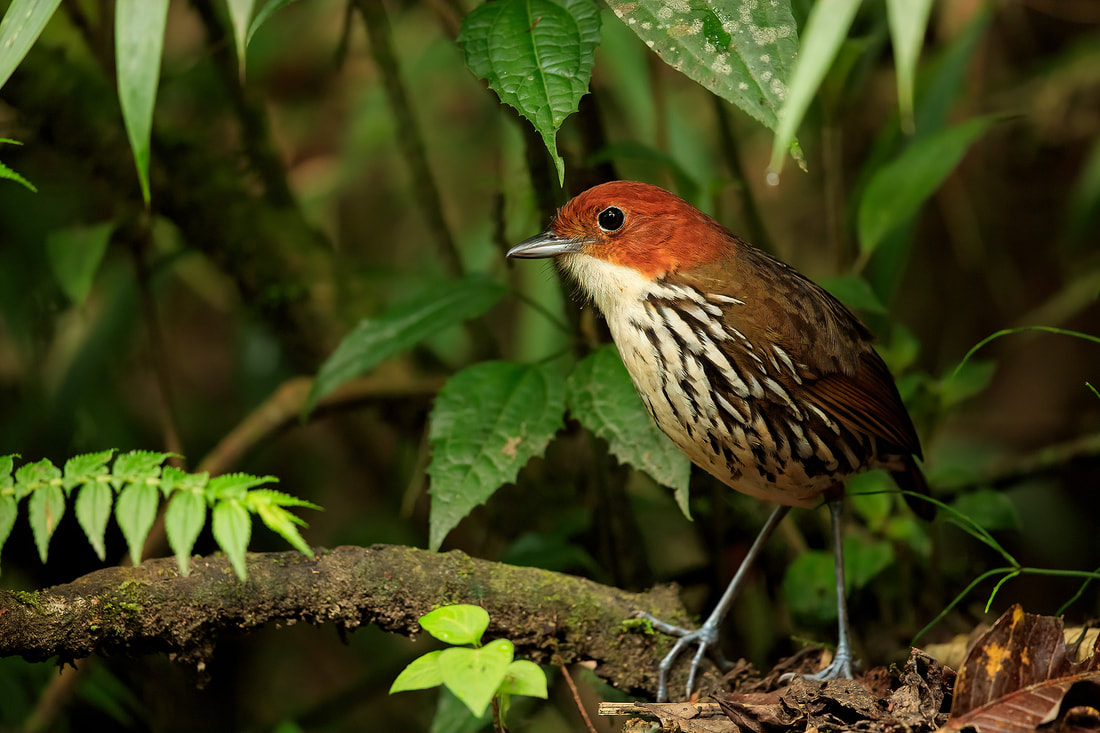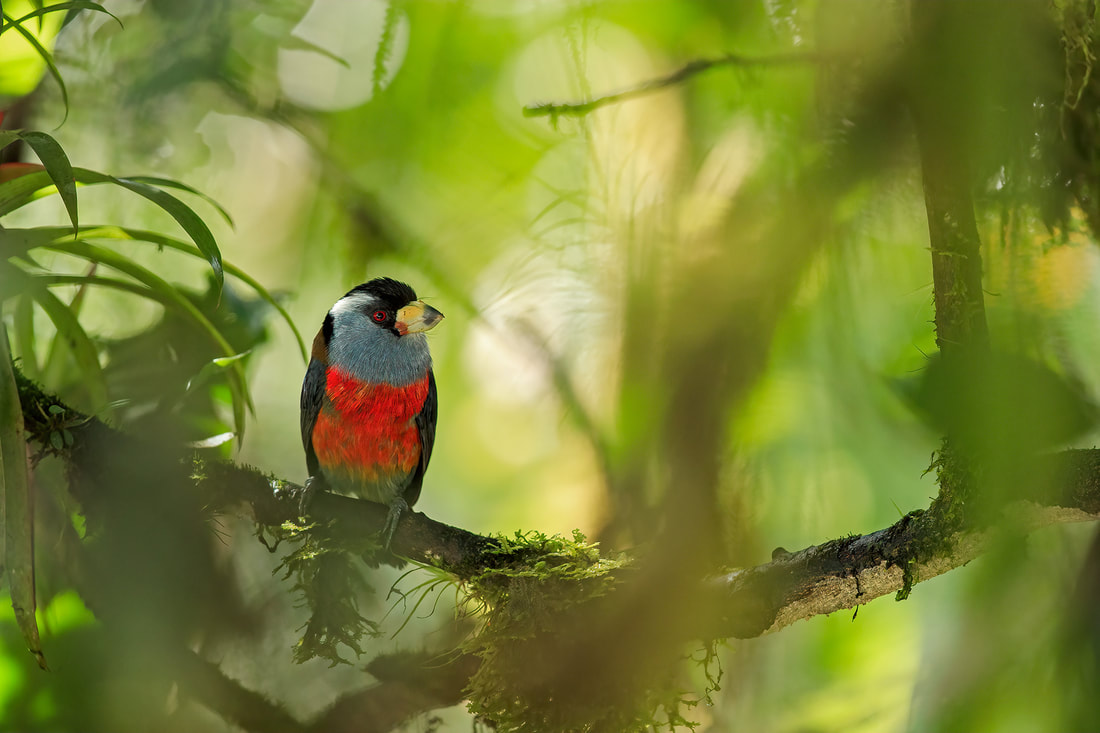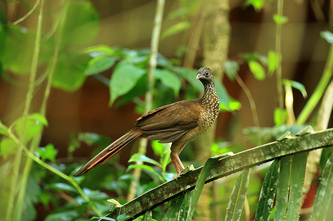|
In September of this year, I was delighted to be at the helm firm for Wildlife Worldwide's Brazil's Big Five Photo Safari. This trip combines the north and southern areas of this vast area, but I am going to focus on each part of the trip across two separate blogs. We started off by flying to the city of Cuiabá, before driving down to the Pixaim River. Here we spent a couple of days photographing a wealth of incredible birds, alongside some iconic mammals including giant river otter and ocelot. I hope you enjoy the images ... After a fabulous introduction to the region and its remarkable wildlife, we headed south to the small riverside settlement of Porto Joffre (right at the end of the Transpantaneiro Highway). Here we hopped aboard a speedboat and proceeded to make our way up the Three Brothers River to Capybara Lodge. This remote spot was the perfect place to base ourselves as we went in search of jaguars. Of course, we enjoyed a lot more than jaguars, but this was certainly the main focus during our time here. Our first sighting here was a huge male jaguar. He decided to put on quite a show and with only one other boat in attendance we were well and truly spoilt. This area is home to some incredible birdlife too, but for me the anhingas and guira cuckoos were among the most characterful of our avian friends. There were so many caiman about, it was actually harder not to spot them. We had hoped that we may be lucky enough to see a successful jaguar hunt on one of these large reptiles. Instead we had to make do with enjoying each species going about their lives without any interaction. As you can see, between the jaguar sightings, there is always something to keep you entertained. Whether you are a photographer, or just someone interested in wildlife, this area is a haven for wildlife and will provide you with countless enjoyable sightings. With that in mind, let's get back to the jaguars. As you can see, we were treated to some memorable encounters with the most powerful member of the big cat family. In a short space of time we enjoyed views of seven different jaguars and had some great photography opportunities.
You can find out more about the trip and book your place on the Wildlife Worldwide website.
0 Comments
Where do I begin? Well, firstly I must say that I have been utterly useless in keeping the blog up to date. An awful lot has happened in the past 4-5 months, including moving house to the Scottish Highlands, leadings tours left right and centre and of course, photographing the world's magnificent wildlife. Anyway, enough about that, it is finally time to finish off sharing my imagery from Colombia. Enjoy! To start with, I am sharing a few images of the charming Chami and chestnut-naped antpittas. These charming little birds have been habituated above the historic town of Jardin in the western Andes of Colombia. Both birds were the perfect posers and we were able to enjoy some fabulous photography. After spending around an hour in the cloud forest photographing these magnificent birds, we descended down to the road which gave us another incredibly special species, the yellow-eared parrot. Here it sat atop of the most magical perch, the only downside was the rogue tendril beneath this beautiful bird. We then continued further along the road, spending the morning in the surrounds of a local garden. This lovely garden, perched on a hill-top with spectacular views of the cloud forest above and farmland below, was a haven for countless species. The highlight was undoubtedly having fantastic views of the golden-headed quetzal. As well as exploring above the town of Jardin, we were able to visit the Andean cock-of-the-rock lek situated on the river that runs along the town's edge. It is possible to find up to 20 different males showing off as they try to attract a mate. Making an awful racket, they do their best to show off their magnificent plumage. This really is a spectacle and the photography opportunities are exceptional too. With time nearly running out on this bird photography extravaganza, we had one last day out in the field trying to find yet another endemic species. This time, we were in Parque Nacional Natural Sumapaz and our target bird was the green-bearded helmetcrest. The weather had taken a turn for the worst at this high-altitude paramo habitat, and so we searched for this diminutive species of hummingbird in the freezing rain and strong winds. We really struggled to find any adults in their finest plumage, but were instead spoiled with exceptional views of a pair of fledglings. This was arguably even more special than seeing an adult as these youngsters are rarely seen.
I hope you have been enjoying this series from the trip I led to Colombia for Wildlife Worldwide? For the third instalment I am taking you higher in the Central Andes in search of some real specialities. We left Manizales and started our climb ever higher up to Nevado del Ruiz - a towering volcano home to a variety on habitats and countless species. Our first stop was the charming hillside property of Hacienda el Bosque. This working cattle farm has committed to protecting its high altitude forest and is actively planting corridors to help wildlife flourish on the property. It is little wonder that the property is a haven for numerous rarely seen species including the flammulated tree-hunter, grey-breasted mountain toucan and hooded mountain tanager. First up though was the equatorial antpitta at a feeding station before we went in search of the spectacular array of hummingbirds. What an incredible start to our day at the hacienda. In my opinion it only got better as the real stars made their appearance a little later on ... It was time for the grey-breasted mountain toucans and hooded mountain tanagers to put on quite the performance. As I am sure you can see, the photography was exceptional thanks to our magnificent subjects. I was blown away by the photography opportunities and the birds were just stunning. From here, we headed further up the mountain in search of higher altitude species including an endemic hummingbird - the buffy helmetcrest. In fact we were also treated to incredible views of tawny antpitta, lacrimose and scarlet-bellied mountain tanagers and rainbow-bearded thornbill. We were incredibly spoilt, but it is important to highlight the amount of time that has to be put in to get the images you are after. I hope you have enjoyed looking through these images and discovering the wonderful birdlife that calls Colombia home. I really can't recommend visiting the Central Andes enough - it is a birder's and photographer's paradise.
Find out more about the trip on the Wildlife Worldwide website and book your place under the expect guidance of Ben Sutcliffe. I know. It has been a while since I last posted about the wonderful bird photography tour I led to Colombia for Wildlife Worldwide. I left you after photographing the absolutely beautiful toucan barbets of the western Andes. Today I am going to whisk you further north towards the city of Manizales and share with you a kaleidoscope of new colours and forms. Of course, with this being a bird photography tour, if you aren't a fancier of our avian friends, I suggest you wait for my upcoming blog on Zambia's South Luangwa National Park. So to start you off easy, here are a couple of images taken from the Tinamou private reserve. The first was the diminutive golden-collared manakin. This tiny bird was incredibly challenging to photograph and my entire group had to work extremely hard to capture a 'record' shot - it was definitely about trying to capture it in its thick rainforest home. The second bird from here is the striking bar-crested antshrike. After a couple of days exploring the trails and gardens of Tinamou, we headed across Manizales to the protected area of Rio Blanco Reserve. This cloudforest habitats has been set aside as a water catchment area for city below and in turn provides a refuge for numerous sought-after bird species. It is particularly well known for several species of antpitta - the most photogenic of these was undoubtedly the chestnut-crowned antpitta which was a perfect poser. The whole group were treated to some exceptional photography opportunities from only yards away. After a morning with the antpittas we spent a prolonged period around the garden feeders, which attracted numerous hummingbirds such as buff-tailed coronet (the most common visitor) and the star bird which was the long-tailed sylph, alongside a number of other passerines. As we descended down the mountain back towards the city of Manizales, we came across our first roadside hawk of the tour - it posed perfectly as everyone snapped away - providing some wonderful photography opportunities. Further down the steep road, we stopped at a small reservoir's dam and immediately saw the handsome white-capped dipper. Like the roadside hawk, it posed beautifully for a brief moment on the dam wall. As we neared the bottom of the steep-sided mountain and crossed the river, our guide Juan spotted a torrent duck. These birds are notoriously hard to approach and tricky to photograph, but we were in luck as the bird was preoccupied with chasing a pair of white-capped dippers. The male duck was just the perfect subject as it came back and forth, stopping atop of numerous rocks with the lush forest-clad banks behind. As I am sure you are starting to appreciate, Colombia is a birder's dream and as a wildlife photographer I think it is equally a rewarding. My group all took such a wide gamut of images, capturing numerous species in flight, feeding and just in their habitat. What more can you ask for?
I will try and bring you the next instalment within the next couple of weeks. In the meantime, you can read my tour report from the trip and find out more information on the Wildlife Worldwide website. It seems like things are slowly returning to normal for those who work in the wildlife travel industry. With things continuing to look up, I was delighted to be at the helm for Wildlife Worldwide's Colombia Bird Photography tour. We flew direct from London to Bogota and then on to the city of Cali across the central Andes in the Cauca Valley. It is important to note that Colombia is home to more birds than other country on Earth and the photography opportunities my group were treated to, were quite simply exceptional. I am going to share some of my images from the trip, spread across a few different instalments. I feel this is the only way to do this amazing country and the spectacular birdlife justice. On our first day, we spent a few days around the lodge's grounds and were blown away by the number of hummingbirds, tanagers, woodpeckers and even toucanets. The next day we moved across the mountain, high above the city of Cali where we hoped to photograph the elusive scaled antpitta and the massively sought-after multi-coloured tanager (see below). For our third day of bird photography in the Western Andes we headed to a known spot for toucan barbet. Here we were treated to some more incredible photography and the whole group just lapped it up. These stunning birds were all photographed over a period of three days in Colombia's Western Andes. I was using my Canon 1DX II with my Canon 500mm f4 L IS II USM lens.
Keep your eyes peeled for the next instalment and be sure to find out more information about the tour on the Wildlife Worldwide website. N.B. I will not be leading the 2023 departure for this tour as I am away in Brazil, leading for Wildlife Worldwide. So after my first afternoon in the Amazon I was already and raring to go for my next outing and to see the rainforest proper. It was arranged that I would be heading for the canopy walkway the next morning and so I packed my camera bag ready to go. The main issue being that I didn’t know what I might need, so I took everything … all 16 kg of it! So as you can imagine it was pretty heavy, and with daytime temperatures in the 30s and humidity levels usually well over 95% it was going to be a hard day. I woke up the next morning, heaved the bag onto my back and headed off into the forest with our English speaking guide, Oscar. We stopped every now and then to see things of interest and then we stopped close by to a particular tree and Oscar set up the scope. He spent a bit of time focusing the scope onto a small hole about 60-70 feet up a huge tree. There in the hole were three Night Monkeys, these small primates always return to the same hole to rest during the day so he knew exactly where they would be. After a pretty crappy photo (due to it being very early in the morning and way up a tree) we moved on to the canopy walkway. Wow, wow and wow! What and amazing experience to be above the forest at such a height, seeing the birds and the mammals and just the trees in all their glory. There we saw bird species of which all were new to me, things ranging from tiny flycatchers to the Black Vulture soaring above us. We saw three species of monkey; Red Howler Monkey, Black-mantled Tamarin and Red Titi Monkey. So anyway, enough blabbering, here are the pictures from that morning and some from the afternoon. After a long hard morning, but definitely one to remember, we had a lovely relaxing lunch and some noisy visitors in the form of Speckled Chacalacas right outside my room as you can see above. The afternoon activity was a photographic boat ride around the black lake, the primary focus was meant to be the prehistoric looking Hotazin. This ancient species of bird has remained unchanged for thousands of years and are extremely successful. However on this occasion all the wildlife seemed a little shy and refused to show themselves particularly well. This is when as a photographer you have to try and be a little more imaginative. The herons in the foliage I particularly like for their more artisitc approach of "Animals in their Environment".
The lake and the lodge both made good photographic subjects too. The lodge looked particularly beautiful at night with its warm lighting glowing among the dark forest. The tree frog species you can see, right at the end of the selection of images, came and found us. Whilst sat at the bar in the evening he appeared on the icecream freezer, seemingly enjoying the cold metal and escaping the constant heat even if only for a short while. So my first full day in the Amazon was certainly educational, introducing me to a variety of main species you can encounter, it wasn't a particulaly good day for close views of mammals but the wealth of bird life was obvious to see. The only down side from a personal point of view was that I wasn't really provided with any great photographic opportunities but you have to take what you can get. The rainforest isn't a forgiving place and you have to work really hard to get good images. Perhaps if this was a pure photographic tour it would have been a very different matter. But full credit must go Part 3 has a new favourite mammal and a splash more colour ... so keep reading! So a few weeks ago I was presented with a superb opportunity, “Would you be interested in joining the Naturetrek Wildlife Festival in Ecuador at the world famous Sacha Lodge in the Amazon Basin? On one condition, that you act as a photographic leader and run some photographic workshops?” I was asked. As I am sure you can all imagine it was a tough choice, before I knew it (2 weeks later) I was on a plane flying from Heathrow to Quito. Quito is a historic, Spanish colonial city which is now the Capital of this relatively small nation. The city was really just a stepping stone towards the Amazon basin but I did a small amount of high altitude birding the day before my flight into, what was for me, the unknown.
So after a day to try and adjust to the altitude, Quito is in the Andes and higher than most European mountains, it was time to board an internal flight to the city of Coca. This city was a small community only 20 years ago but the discovery of oil has brought with it an industrial boom to the Amazonian region. This of course has greatly improved the wealth for the Ecuadorian government but it seems the environmental problems could be severe. Anyway, back to the adventure and the treasures that lay in store. We transferred down the Rio Napo from Coca, heading eastwards along the swollen river on a, high speed, motorised canoe. We were dodging submerged trees for the journey’s entirety but that just added to the excitement. After a couple of hours watching the river world go by, we arrived at the landing point for the lodge. Here we had to alight and start a kilometre long walk through the rainforest to a black lake, on which the lodge is situated. As we made our way along the path and the boardwalks we heard some crashing in the tree-tops. To our amazement, after only being in the forest for half an hour, we had our first two species of primate … a huge family group of Squirrel Monkeys and a slightly more secretive family of Capuchins. It was the Squirrel Monkeys that were the stars of the show, they whole group crossed the path we were on using the overhanging trees and at times were only a few metres away. They sat and posed nicely and what really amazed me, was that they looked straight through us. We weren’t even worth paying attention to, as a large group of people we were just a series of obstacles that could be easily avoided by staying up in the trees. Anyway enough of my rambling enjoy the photos!!!! |
AuthorBret Charman Archives
July 2024
Categories
All
|



















